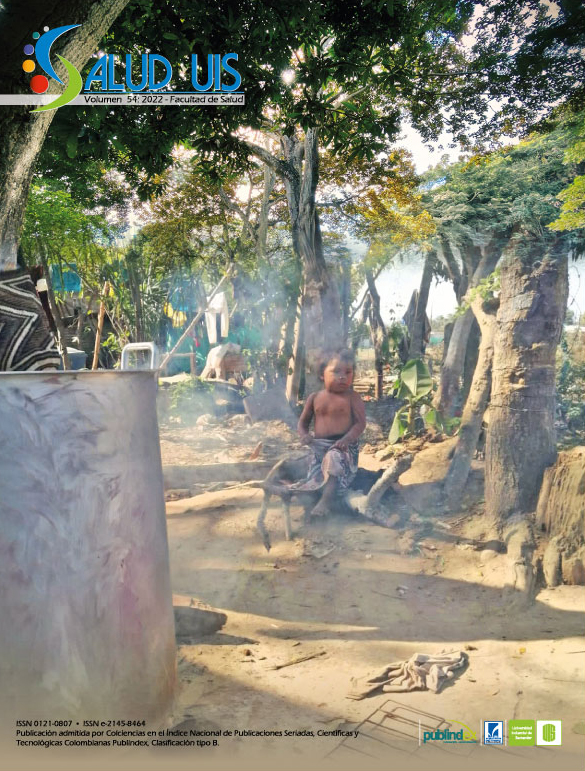Resumen
Introducción: el pedaleo pasivo (PP) es considerado una herramienta en la rehabilitación de personas con lesión
medular (LM). Objetivo: revisar la evidencia científica sobre los efectos clínicos producidos por intervenciones que emplean PP en personas con lesión medular torácica crónica. Metodología: revisión narrativa. Se realizó una
búsqueda en las bases de información científica MEDLINE, CINAHL, LILACS, PEDro y Clinicalkey de artículos en inglés y español, con términos como “spinal cord injury”, “thoracic injuries”, “passive pedaling”, “cycling passive” y “protocol”, entre otros. Resultados: se obtuvieron 14 artículos que describen efectos limitados a nivel de los sistemas cardiovascular, neuromuscular y musculoesquelético; se encontró heterogeneidad clínica en los sujetos del estudio, así como diferencias en los parámetros de realización del pedaleo. Conclusiones: los estudios del PP en personas con LM torácica crónica evalúan en su mayoría el efecto de una única sesión. Los cambios
cardiovasculares son estudiados con mayor frecuencia, aunque se requieren más investigaciones.
Referencias
Bennett J, M Das J, Emmady PD. Spinal Cord Injuries. In: StatPearls. Treasure Island (FL): StatPearls Publishing; 2020. https://www.ncbi.nlm. nih.gov/books/NBK560721/
Huang H, Mao G, Chen L, Liu A. Progress and challenges with clinical cell therapy in neurorestoratology. J Neurorestoratol. 2015; 3: 91-95. doi: https://doi.org/10.2147/JN.S74140
Chin L, King R, King M. Spinal cord injuries. Medscape. 2018. https://emedicine.medscape.com/article/793582-overview.
Kirshblum SC, Burns SP, Biering-Sorensen F, Donovan W, Graves DE, Jha A, et al. International standards for neurological classification of spinal cord injury (revised 2011). J Spinal Cord Med. 2011; 34(6): 535-546. doi: https://doi.org/10.1179/204577211X13207446293695
Kang Y, Ding H, Zhou HX, Wei ZJ, Liu L, Pan DY, et al. Epidemiology of worldwide spinal cord injury: a literature review. J Neurorestoratol. 2018; 6: 1-9. doi: https://doi.org/10.2147/JN.S143236
Carvajal C, Pacheco C, Gómez C, Calderón J, Cadavid C, Jaimes F. Características clínicas y demográficas de pacientes con trauma raquimedular. Acta Med. Colomb. 2015; 40(1): 45-50. doi: https://doi.org/10.36104/amc.2015.403
Cragg JJ, Noonan VK, Krassioukov A, Borisoff J. Cardiovascular disease and spinal cord injury: results from a national population health survey. Neurology. 2013; 81(8): 723-728. doi: https://doi.org/10.1212/WNL.0b013e3182a1aa68
Sezer N, Akkuş S, Uğurlu FG. Chronic complications of spinal cord injury. World J Orthop. 2015; 6(1): 24-33. doi: https://dx.doi.org/10.5312/wjo.v6.i1.24
Hagen EM. Acute complications of spinal cord injuries. World J Orthop. 2015; 6(1):17-23. doi: https://dx.doi.org/10.5312/wjo.v6.i1.17
Gaspar R, Padula N, Freitas TB, de Oliveira JPJ, Torriani-Pasin C. Physical exercise for individuals with spinal cord injury: Systematic review based on the international classification of functioning, disability, and health. J Sport Rehabil. 2019; 28(5): 505-516. doi: https://doi.org/10.1123/jsr.2017-0185
Nardone R, Orioli A, Golaszewski S, Brigo F, Sebastianelli L, Höller Y, Frey V, et al. Passive cycling in neurorehabilitation after spinal cord injury: A review. J Spinal Cord Med. 2017; 40(1): 8-16. doi: https://doi.org/10.1080/10790268.2016.1248524
O’Sullivan S, Schmitz T, Fulk G. Physical Rehabilitation. 6th ed.: F.A. Davis Company, Philadelphia. 2013.
Stokes M, Stack E. 2013. Lesión de la médula espinal: Fisioterapia en la rehabilitación neurológica. 3ª ed.: Elsevier, Madrid.
Phadke CP, Vierira L, Mathur S, Cipriano G, Jr., Ismail F, Boulias C. Impact of passive leg cycling in Persons with spinal cord injury: A Systematic Review. Top Spinal Cord Inj Rehabil. 2019; 25(1): 83-96. doi: https://doi.org/10.1310/sci18-00020
Johnston T. Biomechanical considerations for cycling interventions in rehabilitation. Phys Ther. 2007; 87: 1243-1252. doi: https://doi.org/10.2522/ptj.20060210
Muraki S, Ehara Y, Yamasaki M. Cardiovascular responses at the onset of passive leg cycle exercise in paraplegics with spinal cord injury. Eur J Appl Physiol. 2000; 81(4): 271-274. doi: https://doi.org/10.1007/s004210050042
Muraki S, Tsunawake N. Relationship between pedaling rate and physiological responses during passive leg cycling. Isokinet Exerc Sci. 2008; 16: 19-24. doi: https://doi.org/10.3233/ies-2008-0291
Ballaz L, Fusco N, Crétual A, Langella B, Brissot R. Peripheral vascular changes after home-based passive leg cycle exercise training in people with paraplegia: a pilot study. Arch Phys Med Rehabil. 2008; 89(11): 2162-2166. doi: https://doi.org/10.1016/j.apmr.2008.04.018
Ballaz L, Fusco N, Cretual A, Langella B, Brissot R. Acute peripheral blood flow response induced by passive leg cycle exercise in people with Spinal cord injury. Arch Phys Med Rehabil. 2007; 88(4): 471-476. doi: https://doi.org/10.1016/j.apmr.2007.01.011
Groothuis JT, Hopman MT. Does passive cycling induce changes in peripheral blood flow in persons with spinal cord injury? Arch Phys Med Rehabil. 2007; 88(12): 1740-1741. doi: https://doi.org/10.1016/j.apmr.2007.09.021
Ter Woerds W, De Groot PC, van Kuppevelt DH, Hopman MT. Passive leg movements and passive cycling do not alter arterial leg blood flow in subjects with spinal cord injury. Phys Ther. 2006; 86(5): 636-645. doi: https://doi.org/10.1093/ptj/86.5.636
Kakebeeke T, Lechner H, Knapp P. The effect of passive cycling movements on spasticity after spinal cord injury: preliminary results. Spinal Cord. 2005; 43: 483-488. doi: https://doi.org/10.1038/sj.sc.3101747
Krause P, Szecsi J, Straube A. Changes in spastic muscle tone increase in patients with spinal cord injury using functional electrical stimulation and passive leg movements. Clin Rehabil. 2008; 22(7): 627-634. doi: https://doi.org/10.1177/0269215507084648
Rayegani SM, Shojaee H, Sedighipour L, Soroush MR, Baghbani M, Amirani OB. The effect of electrical passive cycling on spasticity in war veterans with spinal cord injury. Front Neurol. 2011; 2: 39. doi: https://doi.org/10.3389/fneur.2011.00039
Pérez-Parra JE, Henao-Lema CP. Efecto de la movilización articular sobre la amplitud del Reflejo H en personas con espasticidad. Rev Cienc Salud. 2011; 9(2):125-140
Johnston TE, Smith BT, Oladeji O, Betz RR, Lauer RT. Outcomes of a home cycling program using functional electrical stimulation or passive motion for children with spinal cord injury: a case series. J Spinal Cord Med. 2008; 31(2): 215-221. doi: https://doi.org/10.1080/10790268.2008.11760715
Lauer RT, Smith BT, Mulcahey MJ, Betz RR, Johnston TE. Effects of cycling and/or electrical stimulation on bone mineral density in children with spinal cord injury. Spinal Cord. 2011; 49(8): 917-923. doi: https://doi.org/10.1038/sc.2011.19
Willoughby DS, Priest JW, Jennings RA. Myosin heavy chain isoform and ubiquitin protease mRNA expression after passive leg cycling in persons with spinal cord injury. Arch Phys Med Rehabil. 2000; 81(2): 157-163. doi: https://doi.org/10.1016/S0003-9993(00)90134-5

Esta obra está bajo una licencia internacional Creative Commons Atribución 4.0.
Derechos de autor 2022 Steizy Andrea Becerra-Hernández , Lyda Maritza Díaz-Plata, Karen Juliana García-Toloza, Yheisson Fabián Rojas-Marín, Bitia Alexandra Moreno-Oviedo
